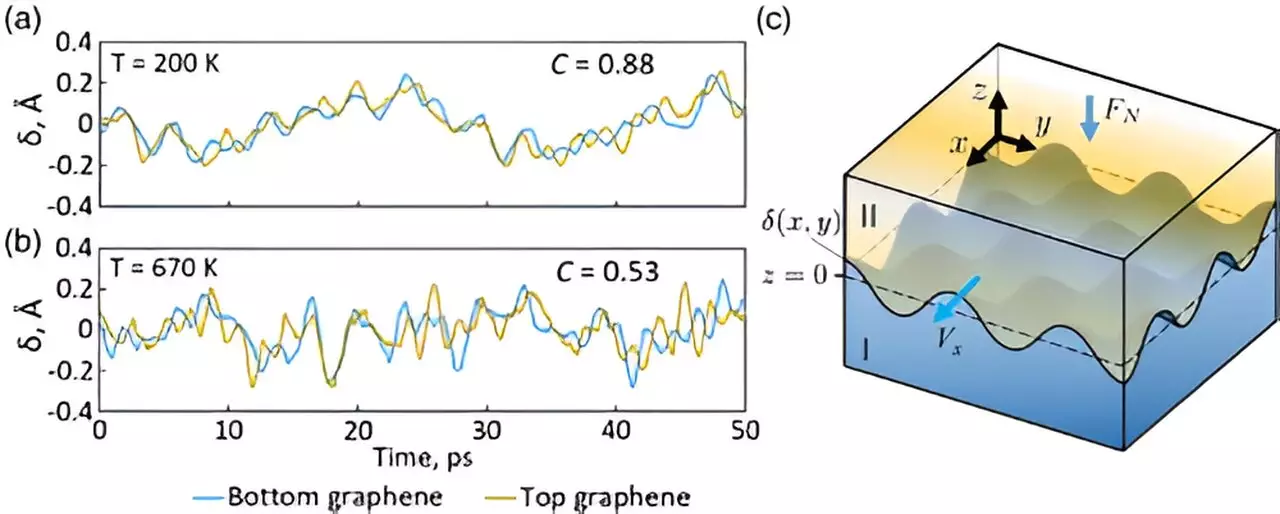In the realm of physics, friction has always been a topic of great interest, influencing our daily lives in numerous ways. Skoltech researchers have recently delved into a fascinating aspect of friction, namely ultralow friction or superlubricity. Contrary to the conventional understanding of friction, they have discovered that superlubricity operates under different laws at the microscopic level. This groundbreaking research not only challenges our existing knowledge but also presents potential opportunities for controlling and harnessing ultralow friction to save substantial amounts of energy worldwide.
The Curious Case of Weight and Friction
One of the intriguing findings of the research is the revelation that the weight of a body sliding along a surface does not necessarily dictate the amount of friction experienced. According to the Amontons-Coulomb friction law, which governs conventional friction, an increase in weight leads to greater friction. However, this fundamental principle does not hold true for superlubricity. Even if the weight of a body is increased by thousands of times, the friction remains as small as it would be for a body with a weight of just 1 kilogram. This unexpected phenomenon challenges our intuitive understanding of friction and demands an explanation.
Superlubricity introduces several unexpected features that defy the traditional Amontons-Coulomb laws. In addition to weight, the friction force in superlubricity is also influenced by sliding velocity, temperature, and contact area. These unusual dependencies further complicate our understanding of friction and necessitate a comprehensive investigation to unravel the underlying mechanisms.
The Skoltech research team, led by Professor Nikolay Brilliantov, embarked on a multidisciplinary study to decipher the enigma of superlubricity. Through a combination of experiments, numerical simulations, and theoretical analysis, the team uncovered the atomistic mechanism behind the peculiar independence of friction force from the weight of the sliding body. Furthermore, they formulated alternative friction laws that accurately describe the phenomenon of superlubricity but sharply contrast with the traditional Amontons-Coulomb laws.
Superlubricity is intrinsically linked to surfaces that possess an extremely smooth texture, extending down to the atomic level. For instance, the researchers observed superlubric properties in graphene, a carbon-based material known for its atomic-level smoothness. Additionally, the contact between the two surfaces must be characterized by incommensurability. This means that the atomic-level roughness or corrugation of one surface should not perfectly align with the other. When the roughness of two surfaces is incommensurate, they do not lock together and are capable of sliding effortlessly.
Although superlubricity allows for smooth sliding, the presence of thermal fluctuations can still give rise to friction. The researchers identified that only specific thermal fluctuations, known as synchronous fluctuations, play a critical role in hindering the relative motion of the surfaces. Synchronous fluctuations occur when the two surfaces bend simultaneously while remaining in tight contact. These fluctuations require minimal energy and are independent of the weight of the sliding body, resulting in friction that is unaffected by weight changes.
Interestingly, the relative sliding of the surfaces induces the synchronous fluctuations, commonly referred to as “surface wrinkles,” to move in the direction of motion with the sliding velocity. This driving force demands energy, which dissipates within the material as heat, giving rise to a dissipative friction force that is directly proportional to the velocity of sliding. Additionally, the amplitude of these synchronous fluctuations is influenced by the temperature of the surfaces, with higher temperatures resulting in larger fluctuations. Furthermore, the contact area between the surfaces influences the number of surface fluctuations that impede relative motion.
By conducting a quantitative analysis of these effects, the Skoltech researchers derived the alternative laws of superlubricity. These laws provide an in-depth understanding of the complex interplay between surface smoothness, incommensurability, thermal fluctuations, and driving forces that govern friction at the microscopic level.
The elucidation of superlubricity opens up new vistas for controlling and exploiting ultralow friction in various mechanisms. The potential applications of this research range from precision engineering to energy-saving technologies. By harnessing the knowledge gained from understanding superlubricity, researchers can work towards designing more efficient systems that reduce energy consumption and enhance overall performance.
Skoltech’s research on superlubricity challenges our conventional understanding of friction. By uncovering the underlying mechanisms governing ultralow friction, the team has paved the way for future advancements in energy-saving technologies and precision engineering. As we delve deeper into the realm of superlubricity, a world of possibilities awaits us, where friction becomes a controllable force rather than a hindrance.


Leave a Reply